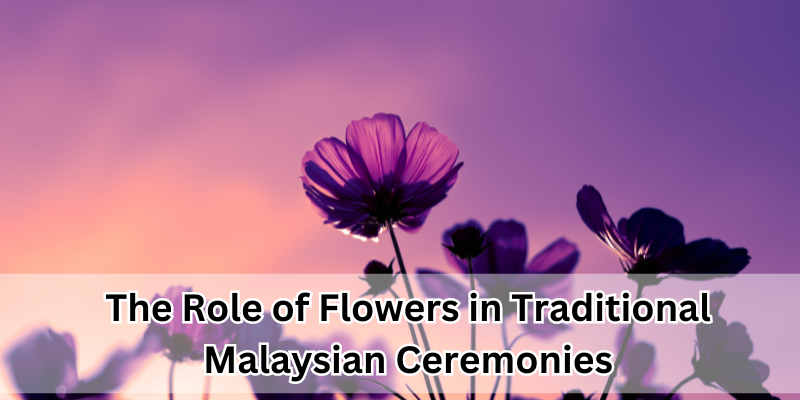The Role of Flowers in Traditional Malaysian Ceremonies


Flowers play a significant role in traditional Malaysian ceremonies, symbolizing various aspects of culture, religion, and social customs. The use of flowers in these ceremonies highlights the rich cultural tapestry of Malaysia, influenced by Malay, Chinese, Indian, and indigenous traditions. This article explores the diverse and symbolic uses of flowers in various traditional Malaysian ceremonies.
Role of Flowers in Malay Weddings
Bunga Telur: In Malay weddings, bunga telur (literally “flower egg”) is a traditional gift for guests. It consists of a hard-boiled egg decorated with flowers and is often presented in beautifully crafted containers. The egg symbolizes fertility and the flowers represent beauty and prosperity.
Pelamin: The pelamin, or wedding dais, is a central feature of Malay weddings. It is often lavishly decorated with flowers, creating a regal and romantic setting for the bride and groom. Flowers used in the pelamin symbolize purity, beauty, and the blossoming of a new life together.
Bunga Rampai: Bunga rampai is a mixture of finely sliced pandan leaves and scented flowers, often sprinkled with rose water. It is used to perfume the bride and groom and their guests, symbolizing purity and the sweetness of the occasion.
Role of Flowers in Chinese New Year
Plum Blossoms: Plum blossoms are popular during Chinese New Year as they symbolize perseverance and hope. The blooming of these flowers during the winter months is seen as a sign of renewal and new beginnings.
Orchids: Orchids are another significant flower during Chinese New Year, symbolizing fertility, luxury, and abundance. They are often used in decorations and as gifts to wish prosperity and good fortune for the coming year.
Peonies: Peonies, known as the “flower of riches and honor,” are highly valued in Chinese culture. During Chinese New Year, peonies are used to symbolize wealth, beauty, and a happy marriage.
Hindu Festivals and Ceremonies
Marigolds: In Hindu ceremonies, marigolds are commonly used in garlands and decorations. They are believed to bring good luck and ward off evil spirits. The vibrant color of marigolds also symbolizes the sun and the power of life.
Lotus: The lotus flower holds deep spiritual significance in Hinduism, representing purity, beauty, and enlightenment. It is often used in religious rituals and offerings to deities, symbolizing divine beauty and spiritual awakening.
Jasmine: Jasmine flowers, with their sweet fragrance, are often used in Hindu weddings and festivals. They symbolize purity, love, and sensuality. Brides frequently adorn their hair with jasmine garlands, and the flowers are also used in temple offerings.
Role of Flowers in Islamic Ceremonies
Frangipani: Frangipani, or bunga kemboja, is commonly used in Islamic funeral rites in Malaysia. The flower symbolizes immortality and the afterlife. It is often planted around graves and used in funeral ceremonies to honor the deceased and offer comfort to the bereaved.
Rose Water: Rose water, made from rose petals, is used in various Islamic rituals, including cleansing and purification ceremonies. It symbolizes spiritual purity and is often sprinkled over the deceased during funeral rites.
Indigenous Traditions
Wild Orchids: Indigenous communities in Malaysia have their own unique floral traditions. Wild orchids, found abundantly in Malaysian rainforests, are often used in traditional healing practices and rituals. They symbolize beauty, strength, and resilience.
Banana Leaves: While not a flower, banana leaves are frequently used in traditional ceremonies by indigenous groups. They serve as plates for food offerings and are used to wrap ceremonial items, symbolizing abundance and hospitality.
Conclusion
The role of flowers in traditional Malaysian ceremonies is deeply rooted in cultural, religious, and social practices. From the symbolic bunga telur in Malay weddings to the auspicious plum blossoms during Chinese New Year, flowers enhance the beauty and meaning of these ceremonies. Understanding the significance of flowers in different cultural contexts enriches our appreciation of Malaysia’s diverse heritage and the timeless beauty of its floral traditions.
